Journal of Contemporary Criminal Justice
VerifiedAdded on 2022/09/18
|11
|968
|17
Presentation
AI Summary
Contribute Materials
Your contribution can guide someone’s learning journey. Share your
documents today.
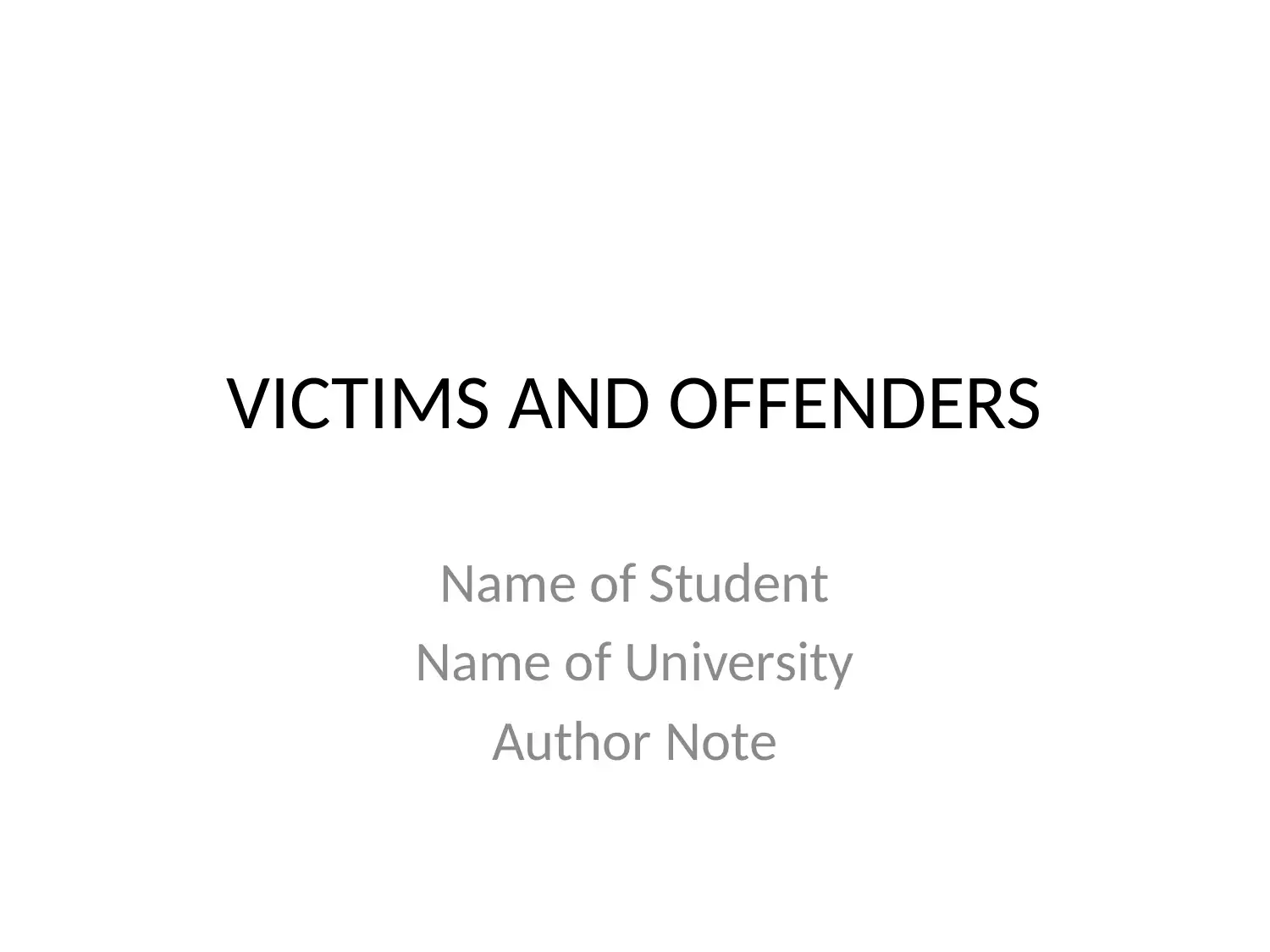
VICTIMS AND OFFENDERS
Name of Student
Name of University
Author Note
Name of Student
Name of University
Author Note
Secure Best Marks with AI Grader
Need help grading? Try our AI Grader for instant feedback on your assignments.
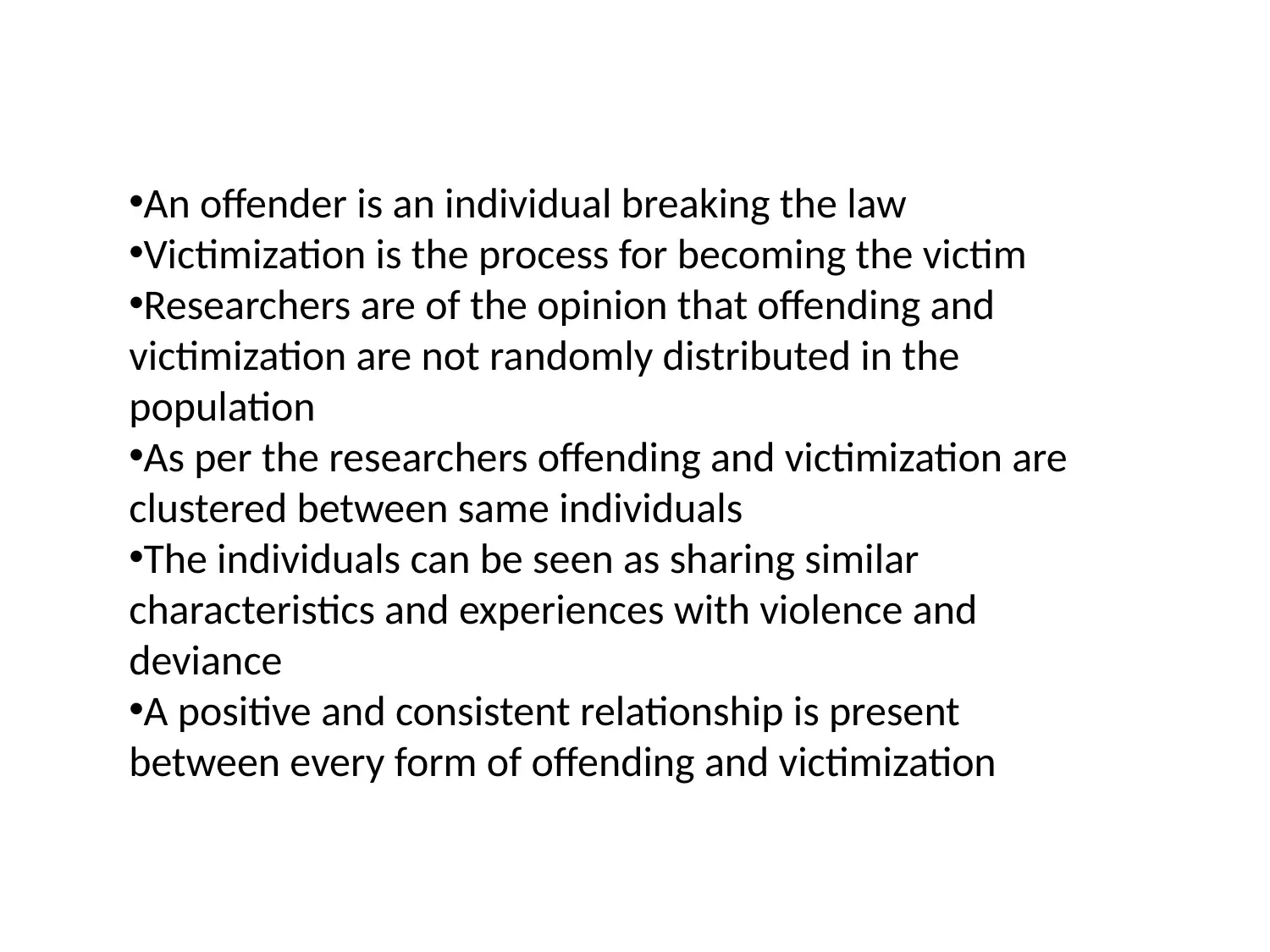
THEORIES OF OFFENDING AND VICTIMIZATION RELATING TO
RACE AND ETHNICITY
•An offender is an individual breaking the law
•Victimization is the process for becoming the victim
•Researchers are of the opinion that offending and
victimization are not randomly distributed in the
population
•As per the researchers offending and victimization are
clustered between same individuals
•The individuals can be seen as sharing similar
characteristics and experiences with violence and
deviance
•A positive and consistent relationship is present
between every form of offending and victimization
RACE AND ETHNICITY
•An offender is an individual breaking the law
•Victimization is the process for becoming the victim
•Researchers are of the opinion that offending and
victimization are not randomly distributed in the
population
•As per the researchers offending and victimization are
clustered between same individuals
•The individuals can be seen as sharing similar
characteristics and experiences with violence and
deviance
•A positive and consistent relationship is present
between every form of offending and victimization
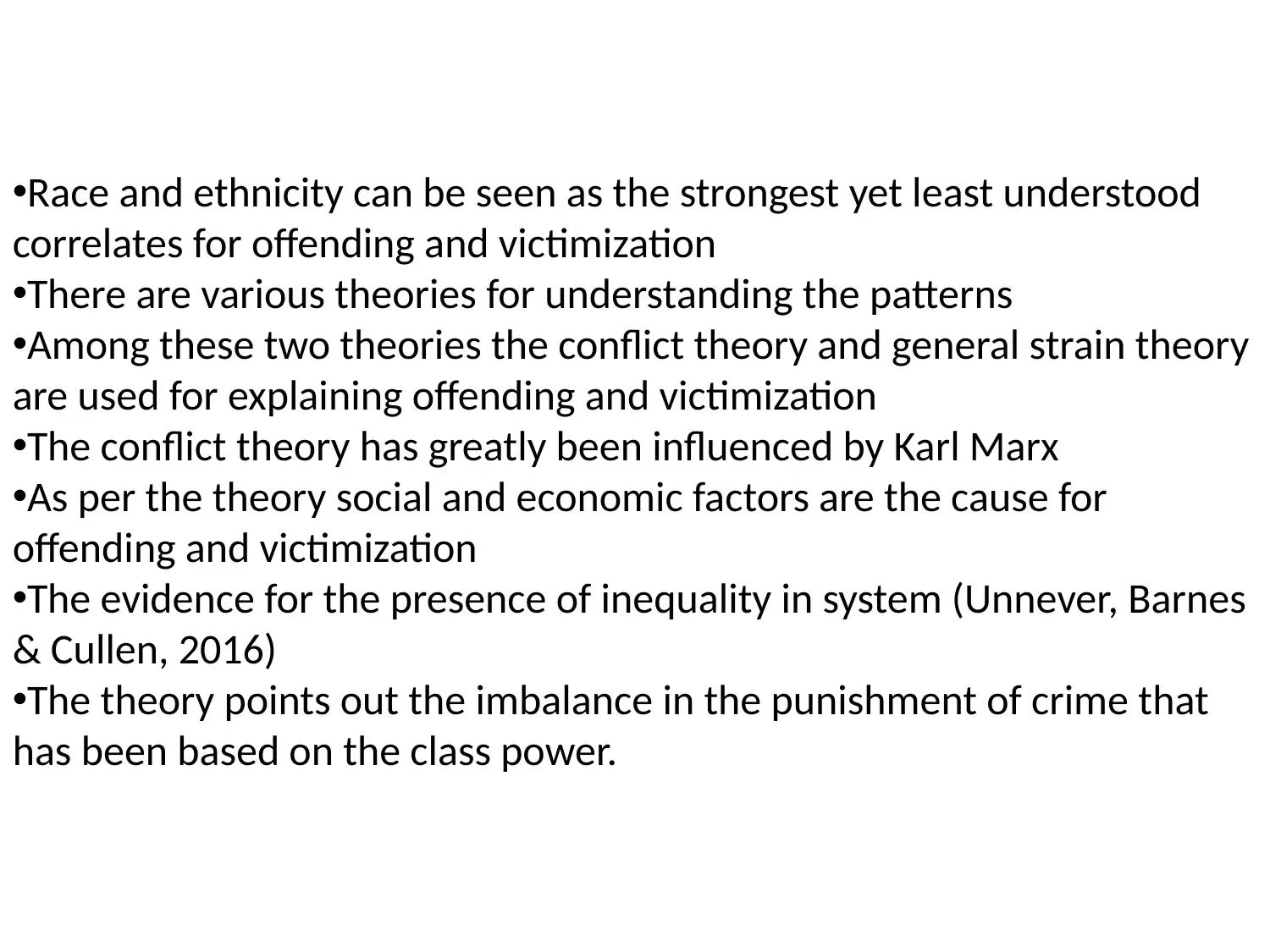
•Race and ethnicity can be seen as the strongest yet least understood
correlates for offending and victimization
•There are various theories for understanding the patterns
•Among these two theories the conflict theory and general strain theory
are used for explaining offending and victimization
•The conflict theory has greatly been influenced by Karl Marx
•As per the theory social and economic factors are the cause for
offending and victimization
•The evidence for the presence of inequality in system (Unnever, Barnes
& Cullen, 2016)
•The theory points out the imbalance in the punishment of crime that
has been based on the class power.
THEORIES OF OFFENDING AND VICTIMIZATION
RELATING TO RACE AND ETHNICITY (CONTD.)
correlates for offending and victimization
•There are various theories for understanding the patterns
•Among these two theories the conflict theory and general strain theory
are used for explaining offending and victimization
•The conflict theory has greatly been influenced by Karl Marx
•As per the theory social and economic factors are the cause for
offending and victimization
•The evidence for the presence of inequality in system (Unnever, Barnes
& Cullen, 2016)
•The theory points out the imbalance in the punishment of crime that
has been based on the class power.
THEORIES OF OFFENDING AND VICTIMIZATION
RELATING TO RACE AND ETHNICITY (CONTD.)

THEORIES OF OFFENDING AND VICTIMIZATION
RELATING TO RACE AND ETHNICITY (CONTD.)
•General strain theory has been developed by Robert Agnew(Lilly, Cullen &
Ball, 2018)
•The general strain theory originally put forward by Robert Merton
•the youths s finding themselves in a position of financial strain yet wish to
achieve material success, resort to
•Although supported by Agnew, yet he believed that certain other factors
that incite criminal behavior in youth are to be taken into consideration
•Full consideration is needed for the role of General Strain Theory for
aiding to explain racial differences
•Researchers argue that African–Americans are likely to be experiencing
more and unique types of strain in comparison to the Whites,
RELATING TO RACE AND ETHNICITY (CONTD.)
•General strain theory has been developed by Robert Agnew(Lilly, Cullen &
Ball, 2018)
•The general strain theory originally put forward by Robert Merton
•the youths s finding themselves in a position of financial strain yet wish to
achieve material success, resort to
•Although supported by Agnew, yet he believed that certain other factors
that incite criminal behavior in youth are to be taken into consideration
•Full consideration is needed for the role of General Strain Theory for
aiding to explain racial differences
•Researchers argue that African–Americans are likely to be experiencing
more and unique types of strain in comparison to the Whites,
Secure Best Marks with AI Grader
Need help grading? Try our AI Grader for instant feedback on your assignments.
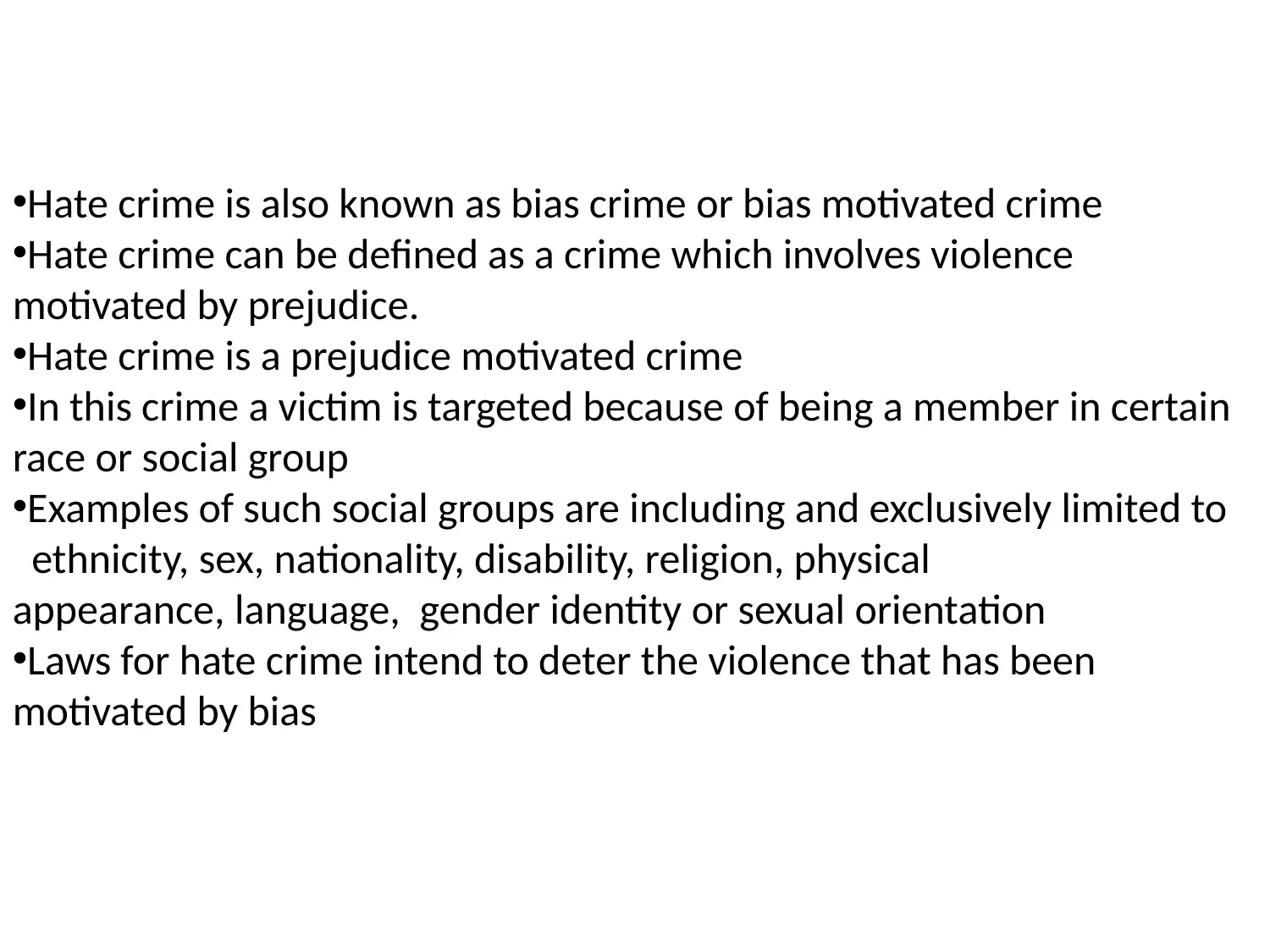
Hate Crime
•Hate crime is also known as bias crime or bias motivated crime
•Hate crime can be defined as a crime which involves violence
motivated by prejudice.
•Hate crime is a prejudice motivated crime
•In this crime a victim is targeted because of being a member in certain
race or social group
•Examples of such social groups are including and exclusively limited to
ethnicity, sex, nationality, disability, religion, physical
appearance, language, gender identity or sexual orientation
•Laws for hate crime intend to deter the violence that has been
motivated by bias
•Hate crime is also known as bias crime or bias motivated crime
•Hate crime can be defined as a crime which involves violence
motivated by prejudice.
•Hate crime is a prejudice motivated crime
•In this crime a victim is targeted because of being a member in certain
race or social group
•Examples of such social groups are including and exclusively limited to
ethnicity, sex, nationality, disability, religion, physical
appearance, language, gender identity or sexual orientation
•Laws for hate crime intend to deter the violence that has been
motivated by bias
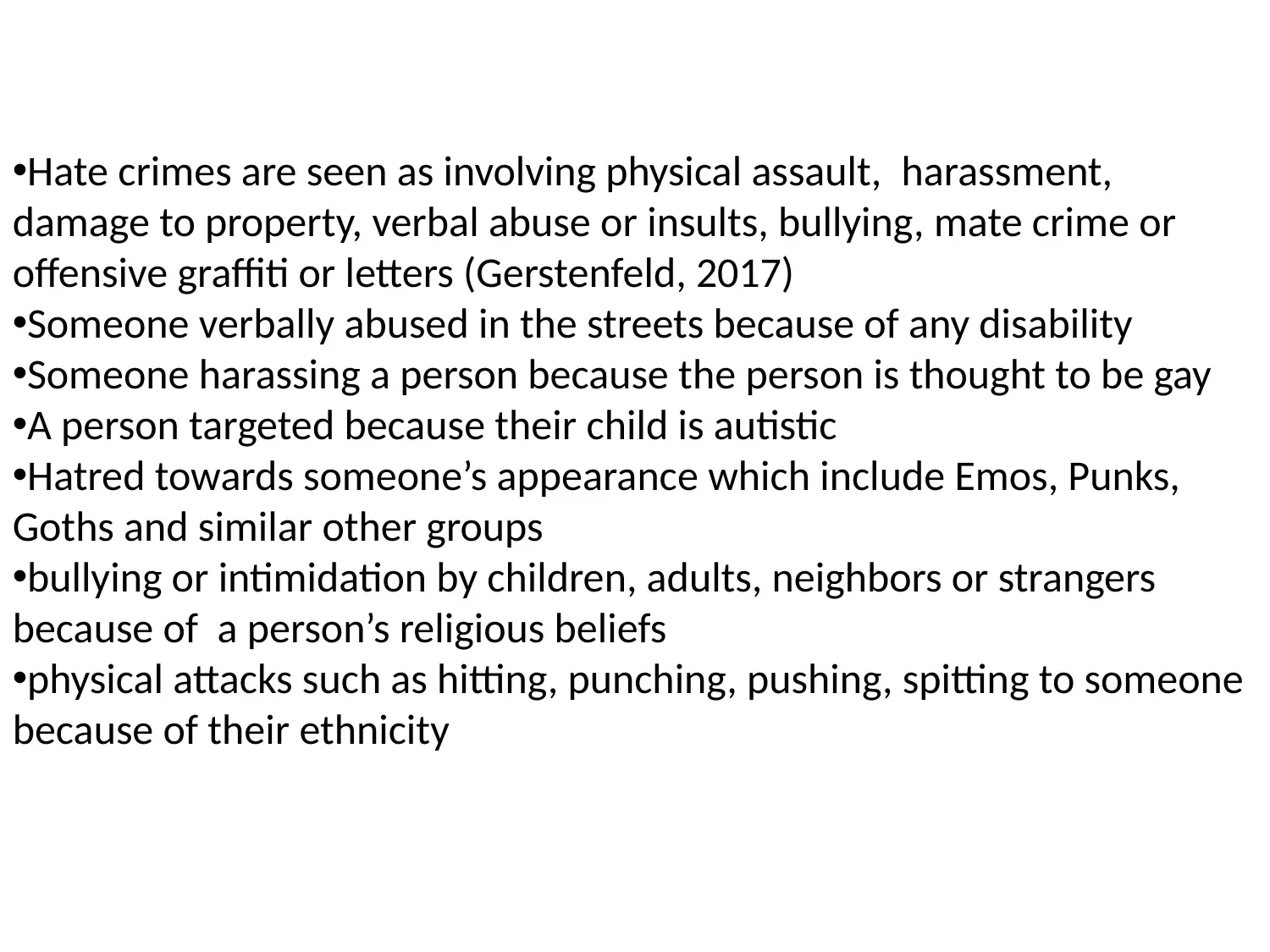
Hate Crime (EXAMPLES)
•Hate crimes are seen as involving physical assault, harassment,
damage to property, verbal abuse or insults, bullying, mate crime or
offensive graffiti or letters (Gerstenfeld, 2017)
•Someone verbally abused in the streets because of any disability
•Someone harassing a person because the person is thought to be gay
•A person targeted because their child is autistic
•Hatred towards someone’s appearance which include Emos, Punks,
Goths and similar other groups
•bullying or intimidation by children, adults, neighbors or strangers
because of a person’s religious beliefs
•physical attacks such as hitting, punching, pushing, spitting to someone
because of their ethnicity
•Hate crimes are seen as involving physical assault, harassment,
damage to property, verbal abuse or insults, bullying, mate crime or
offensive graffiti or letters (Gerstenfeld, 2017)
•Someone verbally abused in the streets because of any disability
•Someone harassing a person because the person is thought to be gay
•A person targeted because their child is autistic
•Hatred towards someone’s appearance which include Emos, Punks,
Goths and similar other groups
•bullying or intimidation by children, adults, neighbors or strangers
because of a person’s religious beliefs
•physical attacks such as hitting, punching, pushing, spitting to someone
because of their ethnicity

OFFENDER RATES AND
STATISTICAL DATA
•USA can be seen as making up about 21% of the prisoner
rates in the world
•Every one adult out of thirty seven are seen as under some
form of correctional supervision
•Around 34% of the total population in correctional facility in
the year 2014 constituted of African Americans
•African American women are seen as being imprisoned
twice more than white women
•On an average whites are 5 times less likely to be
incarcerated than the African American
•Nationally almost 32% African American children arrested,
42% detained and 52% are those whose cases have been
waived judicially
STATISTICAL DATA
•USA can be seen as making up about 21% of the prisoner
rates in the world
•Every one adult out of thirty seven are seen as under some
form of correctional supervision
•Around 34% of the total population in correctional facility in
the year 2014 constituted of African Americans
•African American women are seen as being imprisoned
twice more than white women
•On an average whites are 5 times less likely to be
incarcerated than the African American
•Nationally almost 32% African American children arrested,
42% detained and 52% are those whose cases have been
waived judicially
Paraphrase This Document
Need a fresh take? Get an instant paraphrase of this document with our AI Paraphraser
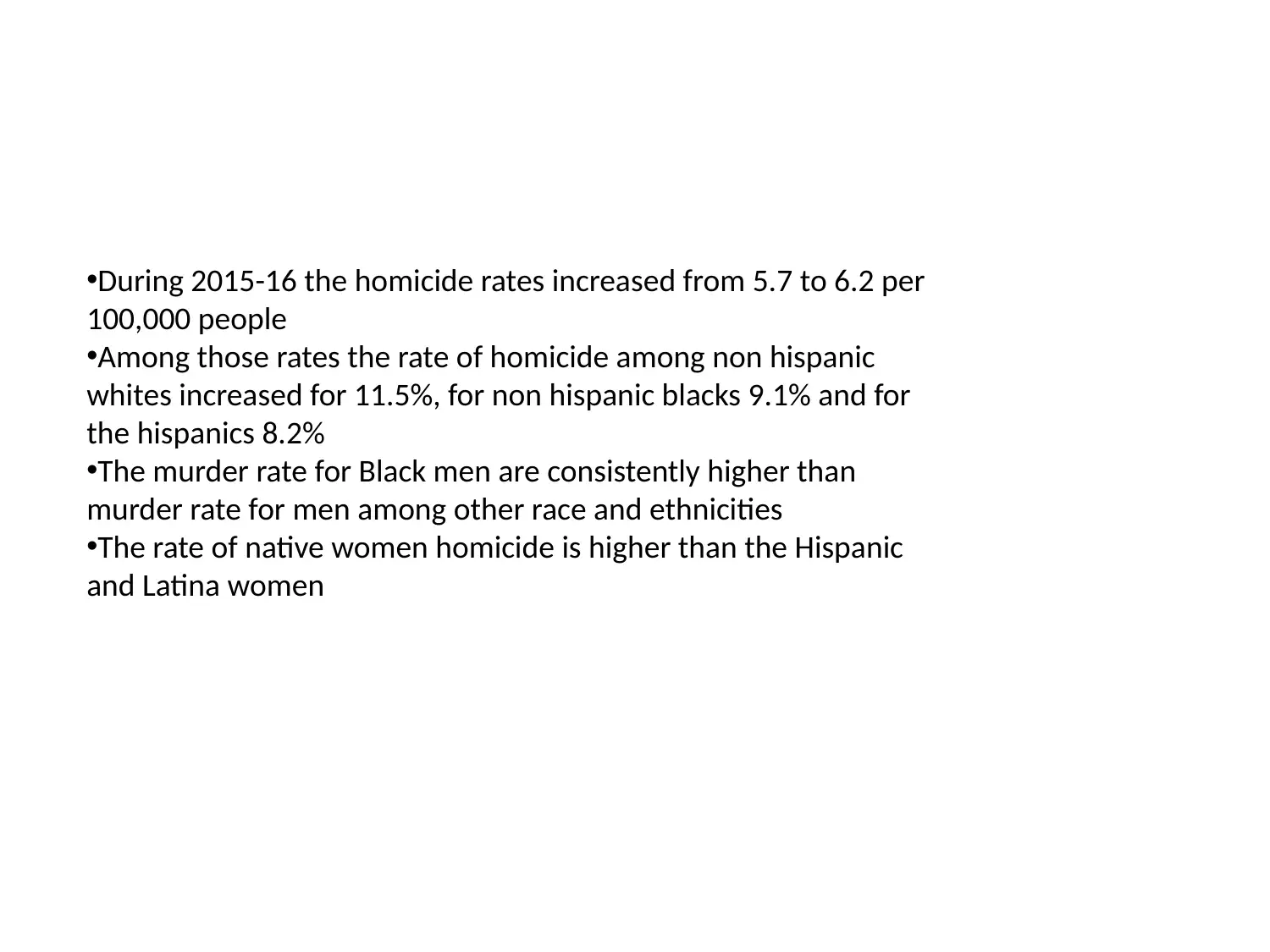
OFFENDER RATES AND
STATISTICAL DATA (CONTD.)
•During 2015-16 the homicide rates increased from 5.7 to 6.2 per
100,000 people
•Among those rates the rate of homicide among non hispanic
whites increased for 11.5%, for non hispanic blacks 9.1% and for
the hispanics 8.2%
•The murder rate for Black men are consistently higher than
murder rate for men among other race and ethnicities
•The rate of native women homicide is higher than the Hispanic
and Latina women
STATISTICAL DATA (CONTD.)
•During 2015-16 the homicide rates increased from 5.7 to 6.2 per
100,000 people
•Among those rates the rate of homicide among non hispanic
whites increased for 11.5%, for non hispanic blacks 9.1% and for
the hispanics 8.2%
•The murder rate for Black men are consistently higher than
murder rate for men among other race and ethnicities
•The rate of native women homicide is higher than the Hispanic
and Latina women
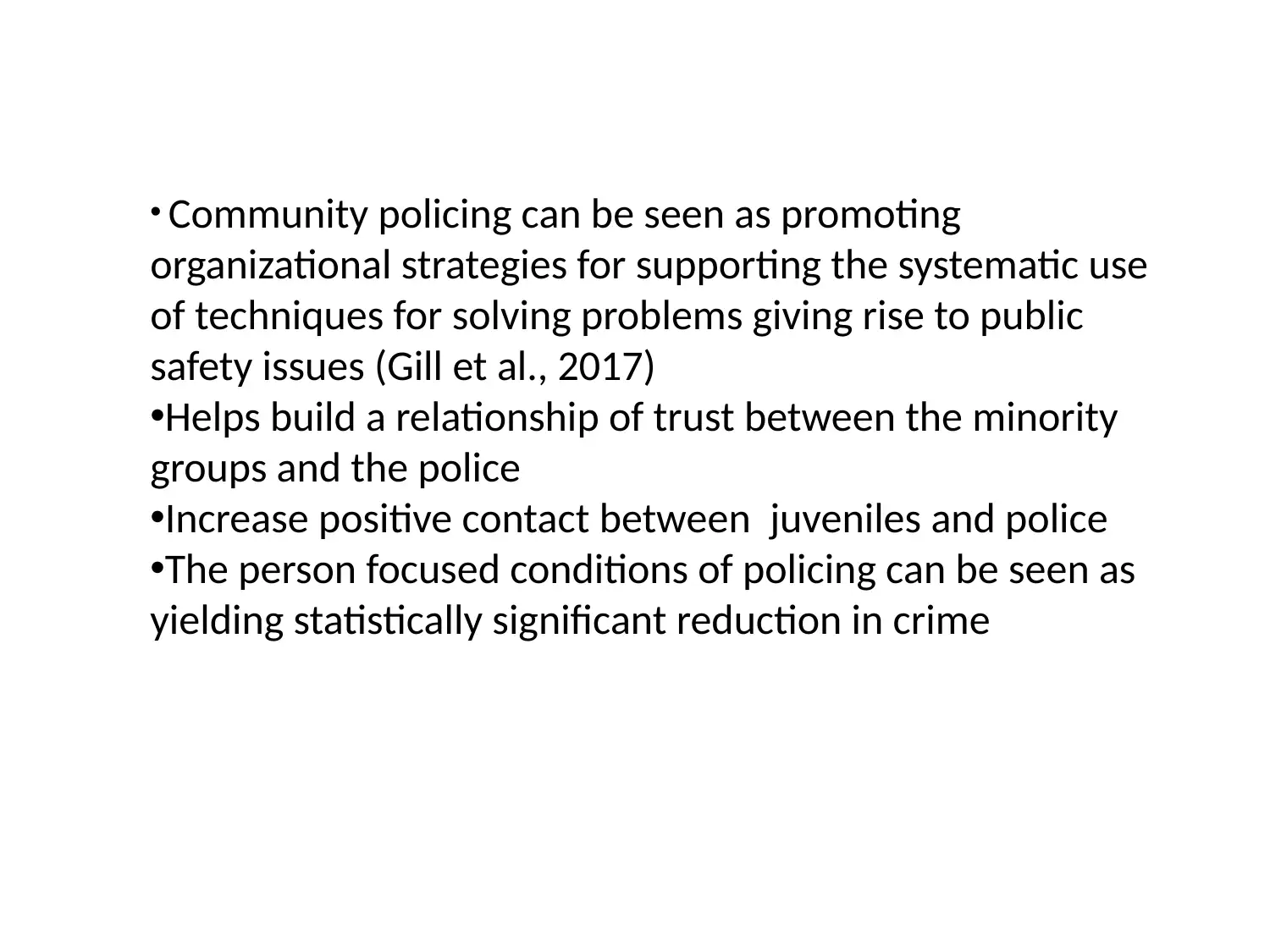
COMMUNITY POLICING
• Community policing can be seen as promoting
organizational strategies for supporting the systematic use
of techniques for solving problems giving rise to public
safety issues (Gill et al., 2017)
•Helps build a relationship of trust between the minority
groups and the police
•Increase positive contact between juveniles and police
•The person focused conditions of policing can be seen as
yielding statistically significant reduction in crime
• Community policing can be seen as promoting
organizational strategies for supporting the systematic use
of techniques for solving problems giving rise to public
safety issues (Gill et al., 2017)
•Helps build a relationship of trust between the minority
groups and the police
•Increase positive contact between juveniles and police
•The person focused conditions of policing can be seen as
yielding statistically significant reduction in crime

REFERENCE
Unnever, J. D., Barnes, J. C., & Cullen, F. T. (2016). The racial
invariance thesis revisited: Testing an African American
theory of offending. Journal of Contemporary Criminal
Justice, 32(1), 7-26.
Lilly, J. R., Cullen, F. T., & Ball, R. A. (2018). Criminological
theory: Context and consequences. Sage publications.
Gerstenfeld, P. B. (2017). Hate Crime. The Wiley Handbook
of Violence and Aggression, 1-13.
Gill, C., Weisburd, D., Telep, C., Vitter, Z., & Bennett, T.
(2017). Community-oriented policing to reduce crime,
disorder, and fear and improve legitimacy and satisfaction
with police: a systematic review.
Unnever, J. D., Barnes, J. C., & Cullen, F. T. (2016). The racial
invariance thesis revisited: Testing an African American
theory of offending. Journal of Contemporary Criminal
Justice, 32(1), 7-26.
Lilly, J. R., Cullen, F. T., & Ball, R. A. (2018). Criminological
theory: Context and consequences. Sage publications.
Gerstenfeld, P. B. (2017). Hate Crime. The Wiley Handbook
of Violence and Aggression, 1-13.
Gill, C., Weisburd, D., Telep, C., Vitter, Z., & Bennett, T.
(2017). Community-oriented policing to reduce crime,
disorder, and fear and improve legitimacy and satisfaction
with police: a systematic review.
Secure Best Marks with AI Grader
Need help grading? Try our AI Grader for instant feedback on your assignments.

THANK YOU
1 out of 11
Related Documents
Your All-in-One AI-Powered Toolkit for Academic Success.
+13062052269
info@desklib.com
Available 24*7 on WhatsApp / Email
![[object Object]](/_next/static/media/star-bottom.7253800d.svg)
Unlock your academic potential
© 2024 | Zucol Services PVT LTD | All rights reserved.



